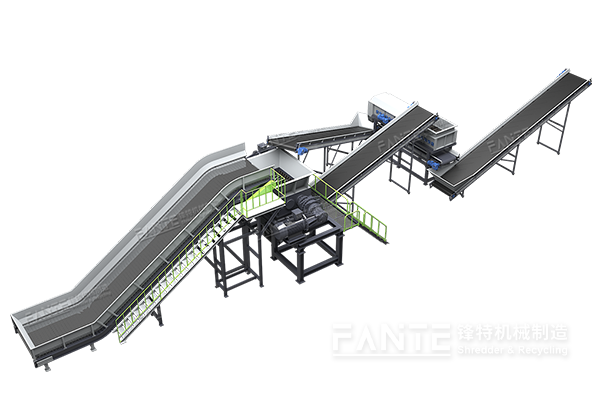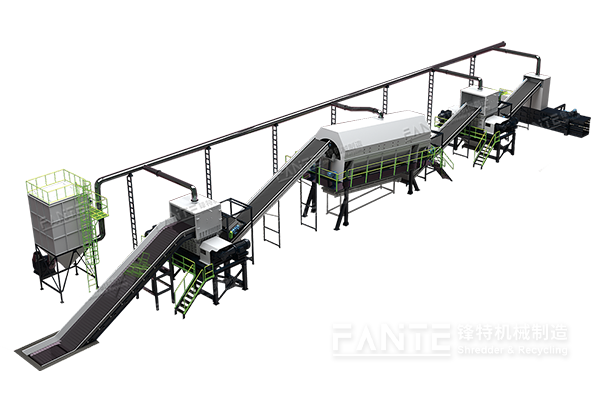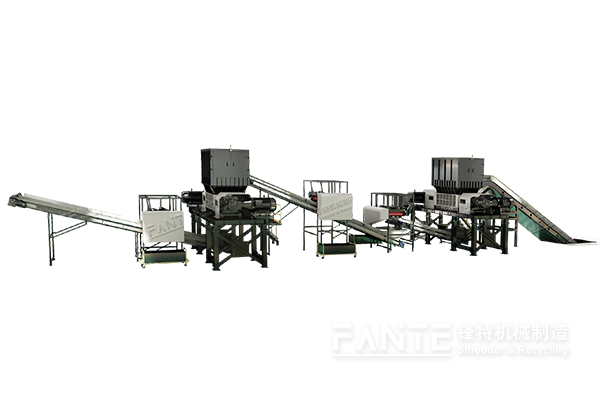Alternative Fuel Systems
The continuous consumption of global energy, population growth, and accelerated urbanization compel us to seek innovative solutions amidst the challenge of dwindling traditional fossil fuel resources. Refuse-Derived Fuel (RDF) and Solid Recovered Fuel (SRF) not only meet our energy demands but also convert combustible solid waste into energy, achieving circular resource utilization.
The Importance of Calorific Value in Alternative Fuels:
Calorific value is a crucial indicator of fuel quality. The higher the calorific value, the more heat is generated during combustion. RDF and SRF are produced by sorting and shredding combustible materials in waste, such as plastics, fibers, rubber, wood, and food scraps, into alternative fuels. By removing most inert materials, their calorific value is significantly enhanced.
According to the EN ISO 21640:2021 standard, SRF is graded based on calorific value, chlorine content, and mercury content. SRF typically has a calorific value of around 18 MJ/kg, with high-grade SRF reaching up to 20 MJ/kg. RDF generally boasts a calorific value of approximately 23 MJ/kg, comparable to that of coal.
This transformation not only maximizes energy recovery but also promotes sustainable waste management practices.
Comparative table of calorific values of fossil and alternative fuels:
| Fuel | Calorie | CO2/Tonne of Fuel Produced |
| Coal | 25MJ/kg | 2.41 |
| Oil Coke | 33MJ/kg | 3.34 |
| Fuel Oil | 42MJ/kg | 3.16 |
| SRF | 20MJ/kg | 0.64 |

The amount of alternative fuels per unit of coal and the table of emitted carbon dioxide:
| SRF | SRF | SRF | SRF | |
| Lower Calorific Value (MJ/kg) | 12 | 15 | 18 | 25 |
| Substitution Required | 210% | 170% | 140% | 100% |
| Fossil CO2 Emissions | ~30% | ~30% | ~30% | 100% |
Alternative fuel (RDF/SRF) systems, including the preparation of the following materials:

Domestic Waste
Domestic waste contains a large number of recyclable and reusable raw materials, such as high-calorific-value combustibles that can be prepared as alternative fuels (RDF/SRF), organic materials that can be made into compost or used for biogas digester fermentation, and plastics, glass, metals, etc., that can be recycled and directly refurbished for use or processed as raw materials.

Renovation Waste
The amount of renovation waste is increasing, and a significant portion of this waste consists of combustible materials such as wood, foam, plastics and other high calorific value items. These materials provide valuable opportunities for energy recovery and recycling, making renovation waste an important resource for sustainable development.

Industrial Solid Waste
Industrial solid waste can be converted into high calorific value “alternative fuels (RDF/SRF)” through pre-processing, which can be used as a substitute for fossil fuels as a fuel, thus realizing waste-to-energy conversion.

Waste Tires
The development of used tires as alternative fuels (TDF) for cement production can reduce greenhouse gas emissions and the consumption of non-renewable resources. Tires produce as much energy as oil when burned. The high calorific value of used tires makes them a good alternative fuel for energy-intensive industries such as cement plants, power plants and paper mills.

Waste Textiles
Waste textile pollution mainly originates from leather trimmings and cloth trimmings at the textile processing stage, as well as from used clothes at the post-consumer stage. Among the ways of resourceful reuse of waste textiles, the more adaptable and cost-effective one is the preparation of RDF/SRF alternative fuels.

Biomass
As agricultural by-products such as crop residues continue to increase, the market for biomass straw processing is expected to experience steady growth in the coming years. Biomass, a renewable energy source, offers an eco-friendly alternative to traditional fossil fuels, contributing to sustainable waste management and energy production.
Alternative Fuel Systems
This solution is suitable for waste tires (TDF), the whole line structure modular design, with low sound, low energy consumption, high output, uniform discharge and other advantages. Waste tires are sent to the double-shaft shredder through belt conveyor for crushing, the crushed rubber blocks are screened by screening machine, and the materials that do not meet the size requirements are returned to the crushing system for secondary crushing until they meet the requirements of the discharge particle size, so as to get the high calorific value of the waste tires as derived fuel (TDF), and realize the recycling of resources.
The solution is mainly for waste textiles, waste plastics, leather trimmings and other high calorific value industrial solid waste, using the shredder crushing concept, not only to achieve the crushing of complex raw materials, but also to ensure that 95% of the material size of the standard rate, to facilitate the production of the back end of the RDF formed material, but also to meet the demand for the sale of SRF bulk material, a system can produce RDF formed material and SRF bulk, and all are high-quality alternative fuels. One system can produce RDF moulding material and SRF bulk material, and both are high quality alternative fuels.
Biomass, a renewable energy source, offers an eco-friendly alternative to traditional fossil fuels, contributing to sustainable waste management and energy production. With the advancement of processing technologies, the utilization of agricultural waste as biomass fuel holds great potential for both environmental and economic benefits.



